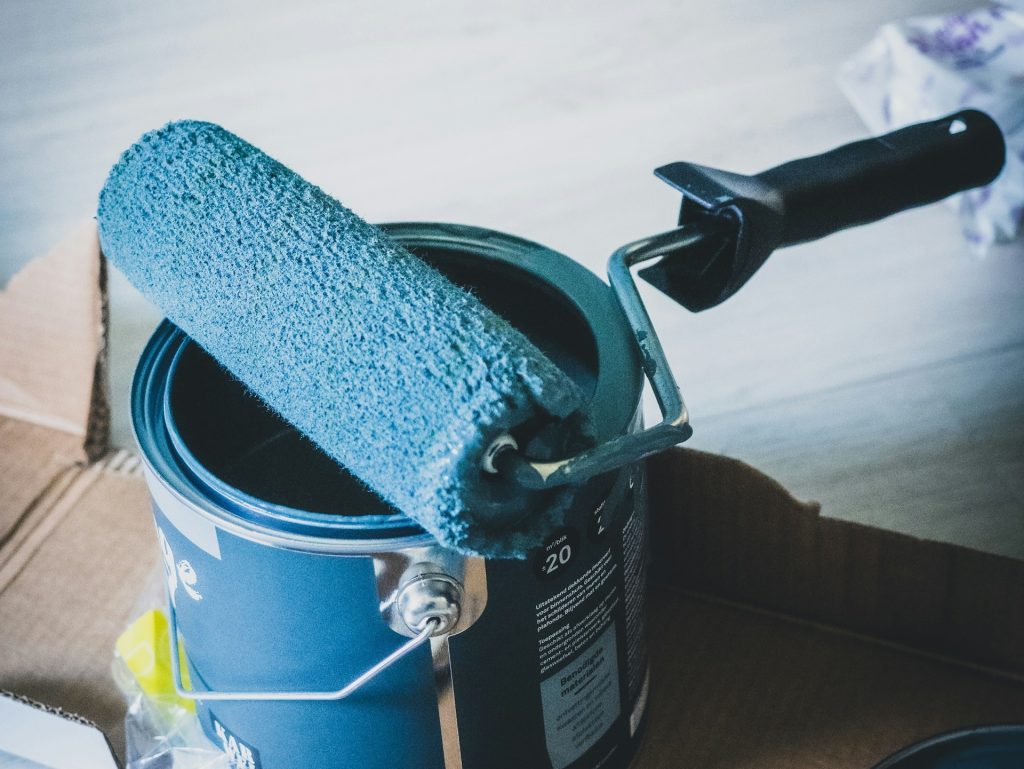Best Low-VOC Paints for Home and Office: Top Brands, Chemical Composition, and Long-Term Air Quality Benefits
When choosing low-VOC or zero-VOC paints for your home or office, you should consider top brands like Benjamin Moore Natura, Sherwin-Williams Harmony, a nd ECOS Paints, which offer eco-friendly and non-toxic alternatives. These paints are formulated with water, minerals, and plant-based materials, greatly reducing the presence of harmful chemicals like formaldehyde and benzene. By opting for these brands, you can guarantee better indoor air quality, fewer health risks, and compliance with industry standards such as GreenGuard Gold and LEED certification.

Understanding Low-VOC and Zero-VOC Paints
When you use traditional paints, you’re exposing yourself to volatile organic compounds (VOCs) like formaldehyde and benzene, which can lead to respiratory issues, headaches, and long-term health risks. These VOCs evaporate quickly, releasing harmful fumes into the air through a process called off-gassing, which can persist for months or even years after the paint dries. By choosing low-VOC or zero-VOC paints, you greatly reduce the amount of toxic chemicals in your indoor air, creating a healthier environment for your home or office.
How VOCs Impact Indoor Air Quality and Health
Exposure to volatile organic compounds (VOCs) from traditional paints can substantially deteriorate indoor air quality and pose serious health risks. Here’s how VOCs impact your health and environment:
- Respiratory Issues: VOCs can cause eye, nose, and throat irritation, and exacerbate asthma and COPD symptoms.
- Long-term Health Risks: Prolonged exposure can lead to liver and kidney damage, and increase the risk of cancer.
- Sick Building Syndrome (SBS): High VOC levels can contribute to SBS, characterized by headaches, nausea, and dizziness.
- Environmental Impact: VOCs react with nitrogen oxides to form ground-level ozone, contributing to smog and climate change.
Switching to low-VOC paints helps maintain better indoor air quality (IAQ) and reduces the risks associated with VOCs.
Top Low-VOC Paint Brands and Features
When choosing low-VOC or zero-VOC paints for your home or office, you have several top brands to evaluate, each with unique features and benefits. Brands like Benjamin Moore Natura, Sherwin-Williams Harmony, and ECOS Paints offer zero-VOC options that are certified by stringent standards such as GREENGUARD Gold and LEED, ensuring they are safe and eco-friendly. These paints use water-based formulas, natural materials, and innovative technologies to minimize chemical emissions and provide high-quality finishes.
Comparing the Best Eco-Friendly Paints for Homes and Offices
To guarantee a healthy and eco-friendly environment in your home or office, choosing the right low-VOC or zero-VOC paint is essential. Here are key points to take into account:
Comparison Points
- VOC Levels: Opt for zero-VOC paints like Benjamin Moore Natura and Sherwin-Williams Harmony to minimize volatile organic compounds (VOCs) and improve indoor air quality (IAQ).
- Certifications: Look for GreenGuard Gold and Green Seal certifications to confirm the paint meets strict standards for chemical emissions.
- Chemical Composition: Water-based formulas generally have lower VOCs compared to oil-based paints, making them a safer choice.
- Application Benefits: Low-VOC paints offer fast drying, non-yellowing qualities, and ease of cleaning, enhancing both safety and aesthetics.
Chemical Composition and Performance Differences
When choosing between low-VOC paints, you need to take into account the differences between water-based and oil-based formulas. Water-based paints, typically acrylic, have notably lower VOC levels because they use water as the solvent, reducing the need for harmful chemicals like formaldehyde and benzene. In contrast, oil-based paints rely on solvents that increase VOC emissions, making water-based options the preferable choice for maintaining healthier indoor air quality.
Water-Based vs. Oil-Based Paints and Their Air Quality Impact
In the domain of painting, the choice between water-based and oil-based paints greatly impacts indoor air quality.
When selecting low-VOC paints, here are key differences to take into account:
- VOC Content: Water-based paints contain substantially fewer VOCs compared to oil-based paints, which use organic solvents.
- Drying Time: Water-based paints dry faster and are nearly odorless, while oil-based paints take longer and emit strong fumes.
- Health Impact: Water-based paints reduce the risk of sick building syndrome (SBS) and adhere better to slightly moist surfaces.
- Environmental Compliance: Water-based paints align more closely with EPA VOC limits, enhancing indoor air quality (IAQ) and environmental sustainability.
Long-Term Benefits and Best Use Cases
When you choose low-VOC or zero-VOC paints, you create healthier indoor spaces that are free from the harmful effects of volatile organic compounds. These paints are ideal for bedrooms, nurseries, offices, and hospitals, as they reduce off-gassing and prevent sick building syndrome. By using brands like Benjamin Moore Natura, Sherwin-Williams Harmony, and ECOS Paints, you guarantee long-term air quality benefits and a safer environment for occupants.
Healthier Indoor Spaces and Where to Use Low-VOC Paints
How can you create healthier indoor spaces without compromising on the quality of your paint job? Opting for low-VOC paints is the key. Here are some benefits and ideal use cases:
- Improved Indoor Air Quality (IAQ): Low-VOC paints reduce the release of harmful volatile organic compounds (VOCs), creating a healthier environment.
- Prevent Sick Building Syndrome (SBS): Use low-VOC paints in bedrooms, nurseries, and offices to minimize off-gassing.
- Eco-Friendly Choice: Low-VOC paints are better for the environment, contributing less to air pollution and smog formation.
- Ideal for Sensitive Spaces: Low-VOC paints are perfect for hospitals, schools, and homes with residents who have respiratory issues or allergies.
